- How to Get Rid of Spurge Weed - December 24, 2021
- Guide to Craftsman LT2000 Parts: Where to Find Them Online? - July 15, 2021
- The Best Time to Spray Dandelions: Tips, Tricks and More - January 9, 2021
Maintaining a healthy lawn has many rewards for family and friends; children playing outside, picnics, walking barefoot, yard games, and more. In addition, fresh green grass can undoubtedly be a sign of summertime and fun in the sun.
But several pests and weeds can quickly wreak havoc on even the most manicured lawns. One such weed is spurge weed. So we’re going to look at ways to prevent spurge weed from creeping into your yard in the first place and how to get rid of spurge weed in the event it does.
What is Spurge Weed?
To start, it’s good to be able to spot spurge weed in your lawn so you know when you need to act. The most common species of spurge weed is the spotted or prostrate spurge. It is a relatively recognizable darker-green plant that grows low to the ground, often outward in a circle shape, and looks similar to a mat.
It also has hairy purple or red stems in the center that sprout. Additionally, when spurge is cut, it releases a milky-white sap that can irritate the skin, which can ruin those outdoor occasions.
Spurge is an annual summer weed that prefers warmer months and will begin growing when soil temperatures are at least 60 degrees Fahrenheit. Thus, it typically sprouts in mid to late spring. Spurge is common throughout the United States but can have a longer growing season in warmer climate areas.
It grows in almost any soil type and mainly thrives in the areas of the lawn where the grass is thin. But spurge is not picky. It’s often seen poking through sidewalk cracks in gardens and flower beds.
Because freshly-sprouted spurge plants can produce seeds within a few weeks, spurge can spread quite quickly, making it even more necessary to spot it sooner than later before a whole takeover is in effect!
Cool-Season Grasses Vs Warm-Season Grasses
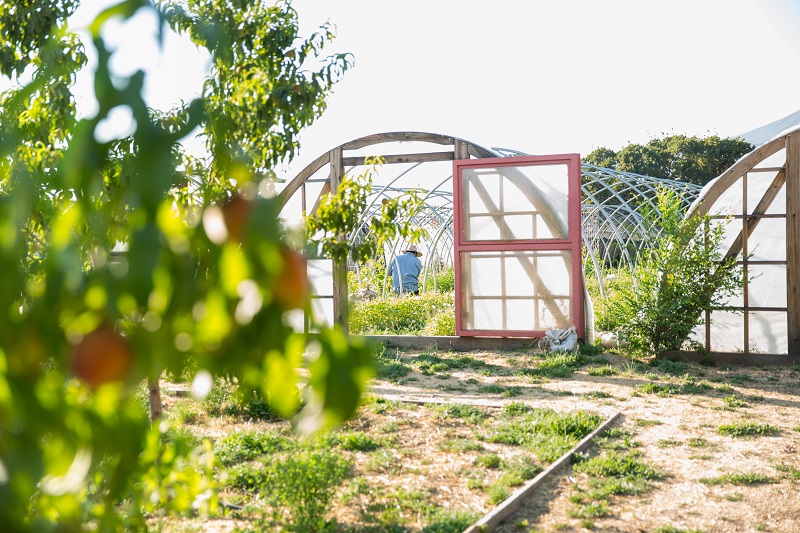
Something to keep in mind when it comes to proper lawn treatment is the grass type of your lawn. Grasses are split into two major categories: cool-season and warm-season grasses. The differences play a significant role in deciding when to fertilize and what type of fertilizer to use, ideal herbicide treatment, watering, and more.
Cool-season grass characteristics:
- Prefer the cooler months of spring and fall
- Are thought to be a hardier grass
- It is best to fertilize during the vigorous growth periods in spring and fall when the first specks of green poke out of the ground
- Avoid fertilizing in the summer months
- They can survive hot summer months and stay green with proper watering
Common cool-season grasses include:
- Kentucky bluegrass
- Fine fescue
- Tall fescue
- Annual ryegrass
- Perennial ryegrass
Warm-season grass characteristics:
- Prefer hot summer months
- Do not do well in cool climate and will die off when too cold
- It is best to fertilize during the spring and summer months when actively growing
- Avoid fertilizing before and after active growth as this can weaken the lawn
- Avoid over-watering
Common warm-season grasses
- Bermuda
- Centipede
- Zoysia
- St. Augustine
How to Prevent Spurge Weed
Because of the rate at which a large number of seeds can be produced by spurge weed, it is infamously difficult to treat once it sprouts up. For this reason, prevention against spurge weed is highly recommended. And, one of the best ways to do so is to start by keeping your lawn healthy.
Spurge weed thrives in bare, unhealthy parts of the lawn, so a thick, healthy turf with deep root growth is the best defense. Here are tips for doing so:
Fertilize
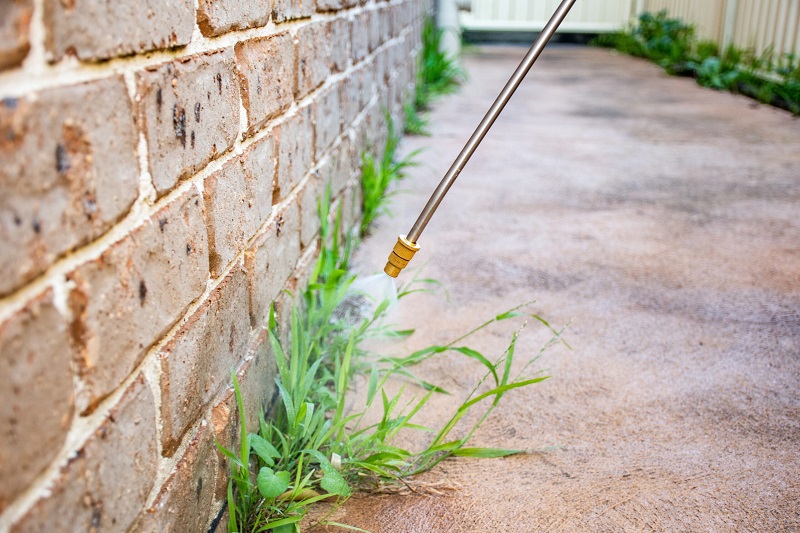
Feeding your lawn throughout the year with fertilizer can encourage healthy grass growth and sustainability. The best time to fertilize cool-season grasses is in the spring when winter dormancy ends, and fresh grass starts coming through.
For warm-season grasses, wait until active growth is happening. After that, most cool-season grasses get another round of fertilizer in late summer or early fall. In contrast, warm-season grasses can be fertilized through the warm months and tapering off in the fall.
Overseed
Overseeding your lawn can help increase its chances of filling in bare patches and fighting incoming weeds. By simply doubling up on the number of seeds you scatter around, you can significantly enhance the thickness and strength of the grass. However, it is best to pull any noticeable weeds before seeding to ensure the likelihood of the seeds taking root can do so without worrying about weeds.
Water Thoroughly
When it comes to watering your lawn, quality of watering over quantity of watering is key. Aim for thorough yet infrequent waterings, which will help encourage deeper root growth and thicker, lusher grass. This will help the grass outcompete weeds as weeds prefer thin lawns with shallow root growth and bare patches.
Keeping the soil moist is important for the grass seedlings to thrive in the beginning stages. However, once the grass is established at three to four inches or mowing height, 1 inch of water or one to two deep waterings a week is all that’s needed.
Adequate Mowing
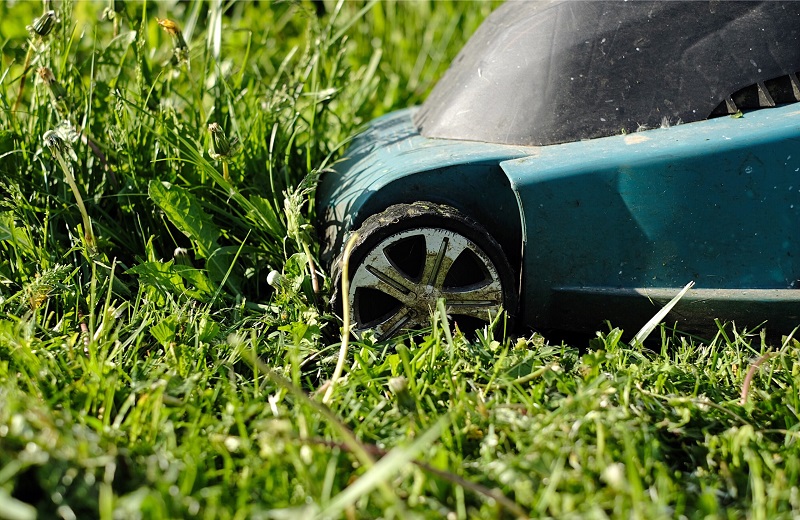
Many people tend to follow a routine schedule when it comes to mowing the lawn. This, however, may not be the best approach to lawn health. Instead, it’s more important and effective to monitor the grass and mow based on the grass needs rather than a particular day of the week. Ideally, you want your grass to hover around 3 to 4 inches tall.
Maintaining this height will promote root growth and overall turf breadth. On the other hand, if a lawn is over-mowed, it can stress the grass and end up thinning it out, leaving gaps for spurge weed to fill in.
Other mowing tips include:
- Changing your mowing direction to keep the grass from wearing one way, ideally following a hatch-cross or checkerboard patter
- Maintaining sharp blades for a clean cut
- Adjusting the blade height if you notice it’s cutting too low
Mulch
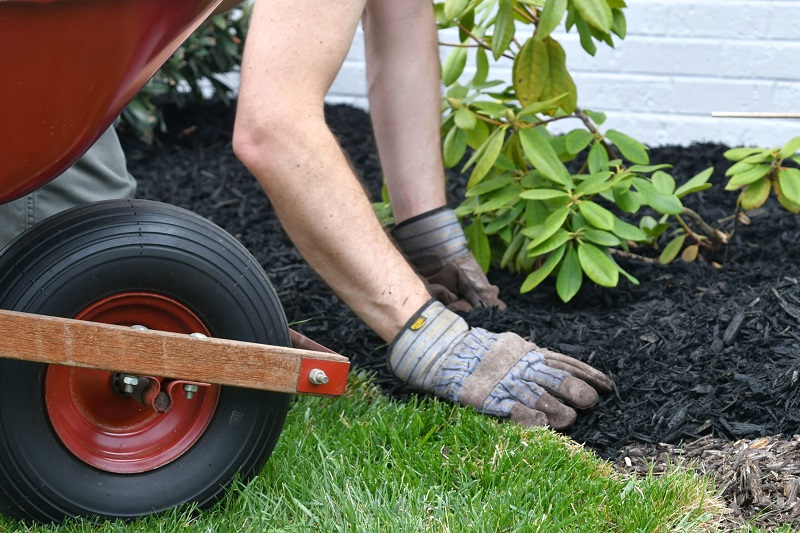
Spreading mulch at 1 to 2 inches thick around flower beds and gardens will eliminate the light needed for spurge weed seeds to germinate. Using organic mulch materials such as straw or wood chips are healthy options that can be aesthetically pleasing as well.
Use pre-emergent herbicide
Pre-emergent herbicides are used to control weeds in lawns before they can take root and appear. Against popular belief, pre-emergent herbicides don’t kill weed seeds before germination. Instead, they work by interrupting their growth process to prevent the seed from completing the germination stage.
For this reason, the effectiveness of using pre-emergent herbicides is all about timing. It is best to use these herbicides in spring or early summer while spurge weed is germinating. If it is used too late, it won’t work. If used on time, they are very effective. Again, knowing if you have cool-season or warm-season grass will help make the best decision here.
How to Get Rid of Spurge Weed Once it Appears
It happens to the best of us. We try all of the steps to prevent it, and spurge weed still manages to introduce itself to our lawns, gardens, flower beds, sidewalk cracks, etc. The good news is, all is not lost. There are some products and methods to get rid of the nasty weed once and for all.
Hand-Pull the Small Patches
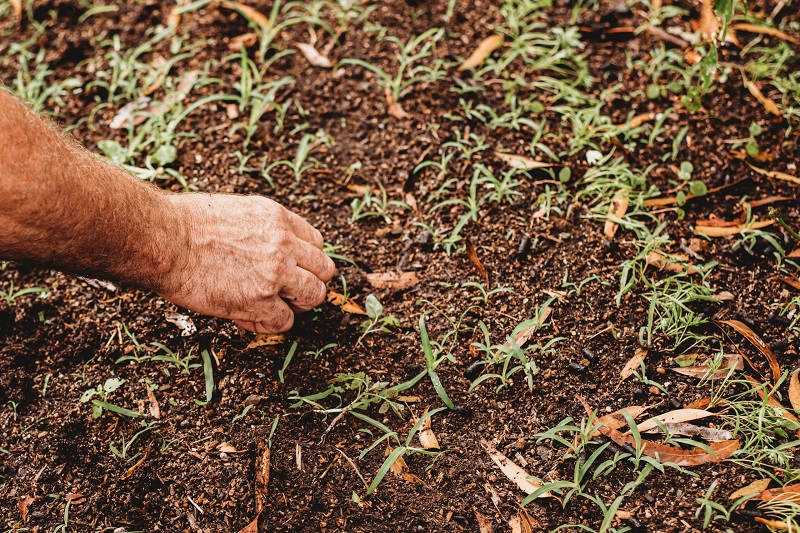
The low to the ground, circular, and flat shape of spurge weed make it easier to get ahold of and hand-pull out of the ground. Also, because spurge weed has a single taproot system, one solid yank can clear the whole plant out of the ground.
Be aware that spurge does like to break off at the stem, and although it is a single taproot system, it can still grow more than 20 inches into the soil, so be thorough and check that you remove all of the plant and roots when removing by hand. Otherwise, it is likely to grow back.
Most importantly, don’t forget that spurge produces that milky white sap that can be irritating to the skin. Be sure to always wear gloves when hand-pulling to avoid direct contact. And definitely do not touch your eye with your hands or gloves that have been in contact with the spurge sap, as this can be especially painful.
Kill large patches with post-emergent herbicides
If the spurge weed gets out of control, or there is simply too much to hand-pull, it is probably necessary to use a product meant for a large application. Luckily the market is flooded with post-emergent herbicides, which can kill weeds once they become present in your lawn.
Ranging from organic to chemically-enhanced ingredients, there are a plethora of herbicides to choose from, depending on your lawn care needs. There are even herbicides explicitly formulated to combat spurge weed in both cool and warm-season types of grass. Pay attention to label instructions for tips on how much to apply and when. Many post-emergent herbicides work best before the spurge weed is too well-established.
Spot spraying is also recommended as many herbicides can kill other plants with which it comes in contact. Using a sprayer is an efficient way to apply herbicides directly to the spurge weed while keeping surrounding plants safe. Keep in mind the forecast and try to use herbicides when rain is not expected as that can spread freshly applied herbicide.
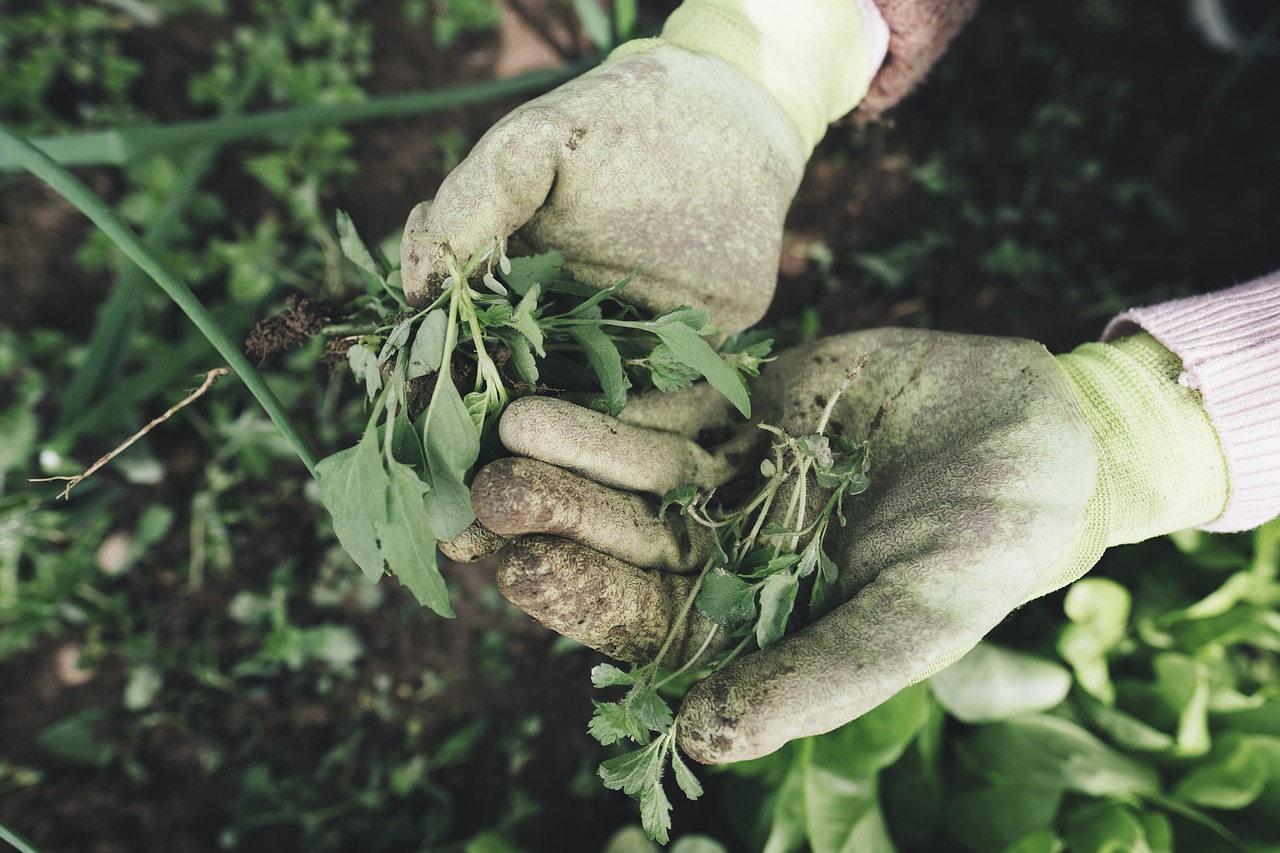
FAQs
Answer: When the spurge plant is cut or broken, it releases a milky white sap. This sap can be harmful to animals and is poisonous if consumed in large amounts. In addition, it is known to irritate the skin and be especially painful if it touches the eye. Therefore, be sure always to wear gloves when doing yard work and handling spurge and other weeds and plant life.
Answer: When soil temperatures are at 60 degrees or higher, spurge can begin to germinate. This typically occurs in mid to late spring. Spurge tends to thrive, however, around 75 degrees, which is why it is commonly discovered in the summer months.
Answer: RoundUp, or glyphosate, is effective at killing mature spurge weed. But, unfortunately, it is also effective at killing everything else it comes in contact with. Furthermore, it does not necessarily attack spurge weed at the root, meaning it can easily come back. So while RoundUp can temporarily relieve the spurge weed in your lawn, it is not necessarily permanent.
Answer: If you’re looking for a more natural remedy against weeds, white vinegar is one solution that often comes up. Even with spurge weed, white vinegar has been found to kill it. To use white vinegar, fill a spray bottle with white vinegar and a few drops of dish soap. Then, spray directly on the spurge weed, and avoid contacting other plants. It’s best to use vinegar on sunny days that are somewhat hot.
Question: Will spurge weed survive the winter?
Answer: No, spurge will die off once soil temperatures dip below 60 degrees. However, that does not mean that it is dead for good. The spurge weed offspring can survive the winter months and be waiting for spring to reemerge. In this case, pre-emergent herbicides can be useful to keep the spurge weed emergence at bay.
Answer: Spurge weed is a fast-moving weed and can spread aggressively. It can produce hundreds of seeds in one growing season and has an extensive root system. Therefore, if bare, thin patches in a lawn, spurge weed can quickly take root. Because of this, it is best treated before the spread occurs.
Answer: Spotted or prostrate spurge weed, the most commonly found in the United States, is native to eastern North America and can grow in a variety of soils and soil conditions.
Purge that Spurge
Spurge weed, like many weeds, is much more difficult to treat once established and growing. For this reason, preventative care is always recommended. Maintaining a lush, healthy lawn lacking bare, thin patches and spurge weed will have a hard time establishing itself. Chemical treatments should ideally remain a last resort, as certain ingredients can be harmful to humans and surrounding plants and animals.

